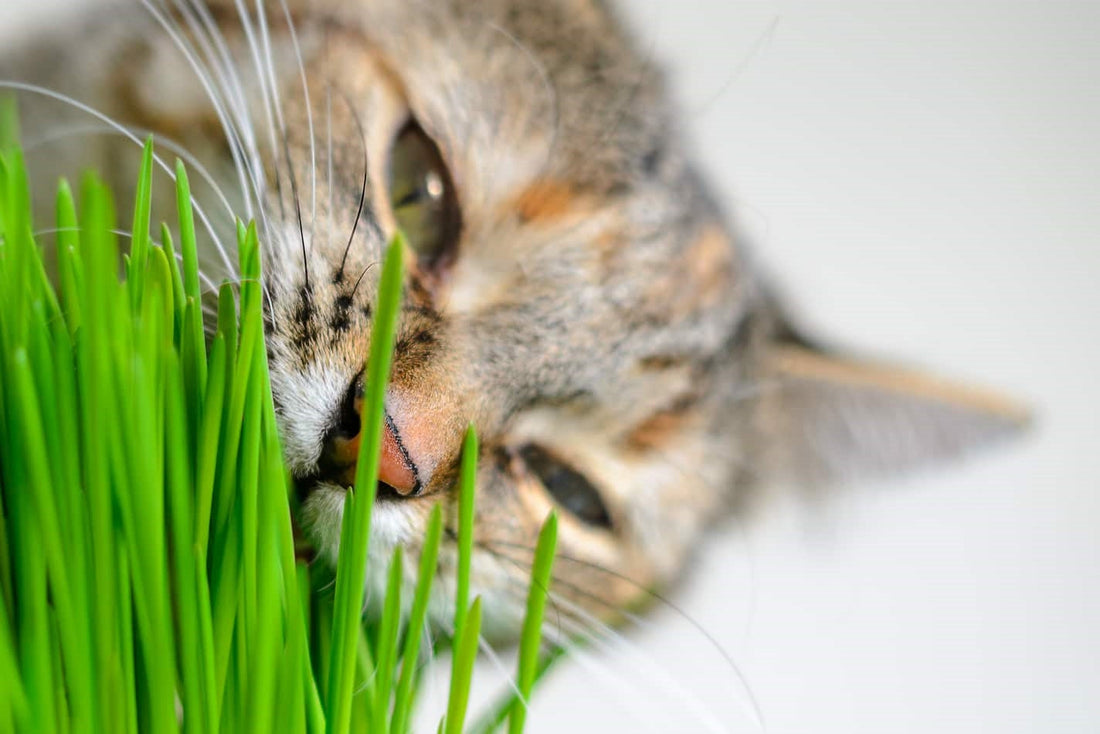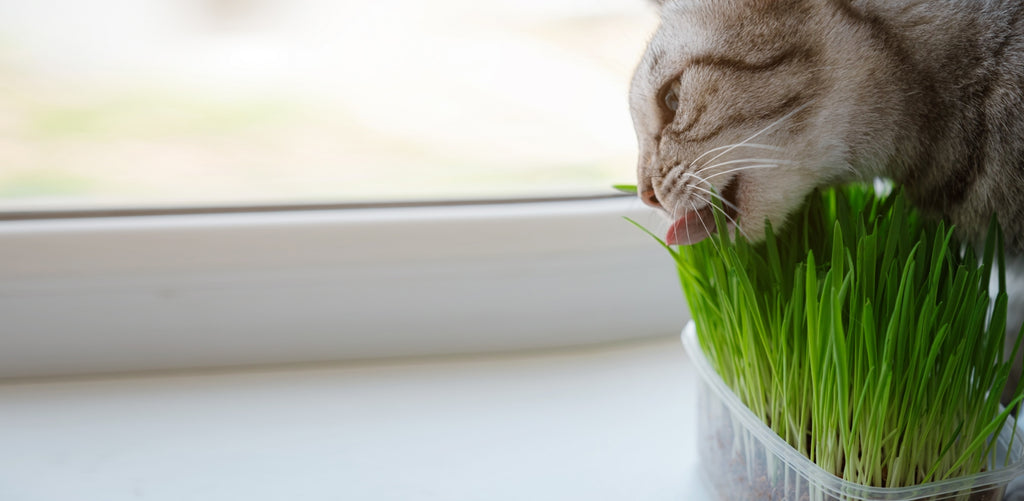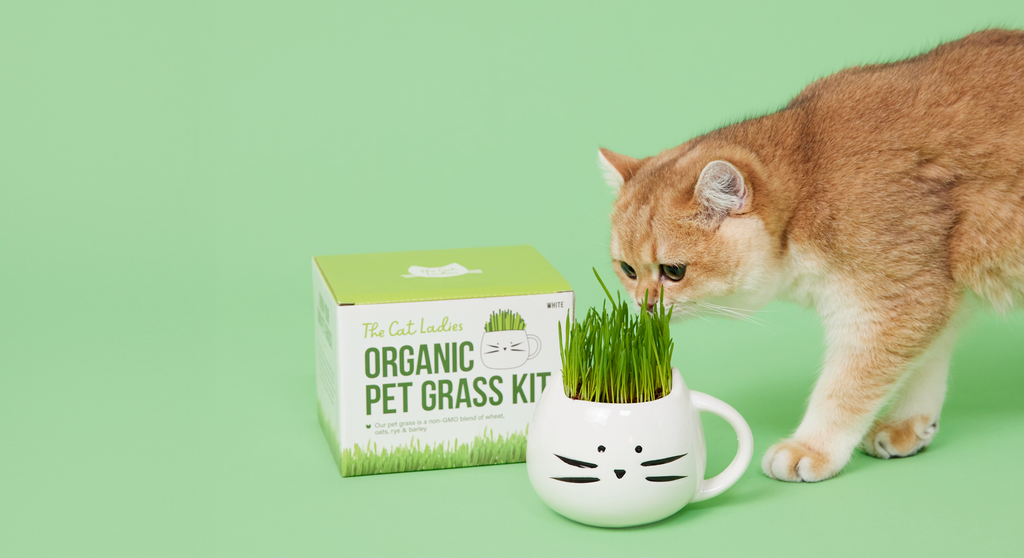
Why Cats Can’t Get Enough of Grassy Greens
Share
Most cats love snacking on grass, and various factors account for the ongoing popularity of this fresh salad green. Cats are known for their independent and mysterious nature, but when it comes to indoor cats and their health and well-being, they often rely on their human companions to make the right choices. One such choice that can significantly impact your feline friend's life is providing them with cat grass. While it may seem like a simple addition to your home, cat grass offers a range of benefits that contribute to your cat's overall health and happiness.
Health Benefits of Cat Grass for Cats
Macronutrient profiles of feral and wild cats pin down small, lean prey animals such as rabbits, rodents and birds as prize treats, but cats also enjoy chewing on vegetation, which provides other benefits that a carnivore diet lacks.
Grass boosts even the most well-fed cats. This could be due to it being a good source of trace minerals, micronutrients, folic acid, and vitamins A, B, and D - all of which are dependent on the pH and mineral availability of the substrate it’s grown in. Read more of the benefits of cat grass here!
Chlorophyll and its Health Enhancing Properties
Chlorophyll has long been recognised as a superb health enhancer offering sun-baked goodness with additional breath-cleansing properties. To counter the effects of a sub-standard diet, cats are intuitively drawn to access this revitalizing pigment tucked inside tiny organelles housing chlorophyll which acts against dental caries.
Cats that routinely eat grass tend to have regular gastrointestinal tracts, fewer hair balls, and less constipation. Plant fibre assists with digestion and elimination, and has the extra perk of natural hairball control.
Many indoor cats who lack access to greens crave outdoor titbits, making a patch of grass or a cat grass planter an excellent decoy to distract from other toxic plants in their surround.
It’s not unusual for cats to vomit shortly after eating grass, as felines don’t have the necessary enzymes to digest large volumes. But all is not lost, as upchuck serves to clear the stomach of fur, feathers, parasites, bones and other nasties which can irritate the digestive tract or even cause lasting illness.
Ultimately, whether it’s for the taste, texture, nutritional reasons or more, consumption of grass is common behavior for all cats, and most furry felines love to munch it down by the mouthful.

Why Cats Nibble on Grass:
- To quicken bowel movements – it’s a natural laxative
- To relieve indigestion and induce vomiting
- To purge parasitic worms from the system
- To access vitamins and mineral nutrients
- To eject horrid hairballs
- To keep entertained
- To keep you entertained
Scientists estimate that cats have around 470 taste buds, compared to that of over 9000 taste buds found on the human tongue. Domestic and wild cats apparently share a taste receptor gene mutation that stops their sweet taste buds from binding to sugary molecules, leaving them with no ability to taste sweetness.
Instead, their taste buds respond well to amino acids and bitter tastes - therefore grazing on a blade of grass or two just comes naturally to all our beloved feline friends.
Why Your Cat Needs Cat Grass
Incorporating cat grass into your cat's routine is a simple yet effective way to enhance their physical and mental well-being. From aiding digestion to providing essential nutrients and offering an outlet for natural behaviors, cat grass is a valuable addition to any cat-friendly home. So, the next time you're at the pet store, consider picking up some cat grass – your feline friend will thank you for it!
Explore The Cat Ladies Cat Grass
